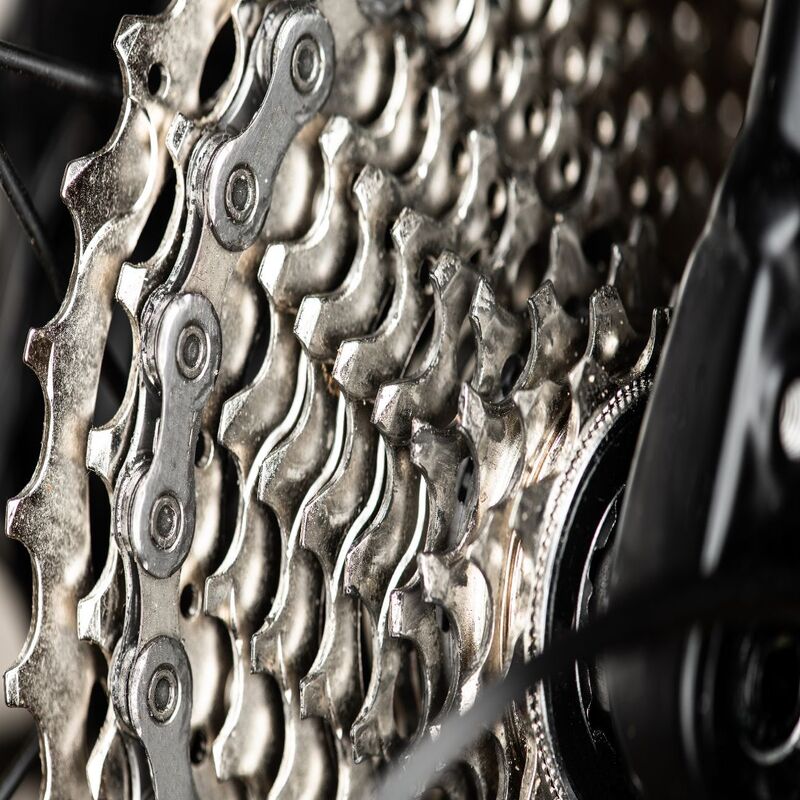Bicycling is not just a means of transportation but also a sporting activity that requires technical know-how. Among the technicalities in biking, understanding and calculating the gear ratio stands out. Knowing how to calculate the gear ratio can drastically improve your biking efficiency. This article will break down the components of bicycle gear ratio, the significance of proper calculations, and how to use a gear ratio calculator.
Introduction to Gear Ratios
Gear ratios are critical in biking performance. They dictate how your pedaling translates to wheel movement. Essentially, a gear ratio compares the number of teeth on the chainring to the number of teeth on the cog. Calculating this ratio helps bicyclists understand how much force is needed to move the bike. This understanding directly affects your performance on various terrains and your overall biking experience. Without this knowledge, you might struggle with inefficient riding.
Importance of Gear Ratios
Gear ratios are not just numbers; they are intrinsic to a cyclist’s efficiency. A correct gear ratio ensures that energy expended while pedaling is optimized for speed and effort. Higher gear ratios mean more speed but require more force. Conversely, lower gear ratios demand less force but result in slower movement. These ratios are essentially a balancing act between physical exertion and the desired speed.
Components Affecting Gear Ratios
Several components factor into your gear ratio calculations. The primary elements are the chainring size, cog size, and wheel diameter. The chainring is attached to your pedals, while the cog is on your rear wheel. The wheel size can also have a significant impact, especially when calculating rollout. All these components must be considered together for accurate gear ratio calculations.

How to Calculate Gear Ratios
Calculating gear ratios might seem intimidating but becomes simple once you understand the basic formula. Here’s a step-by-step breakdown to make this process accessible to every cyclist. Using these simplified steps enables anyone to determine their optimal gear ratio with ease.
Basic Formula
The formula for calculating the gear ratio involves dividing the number of teeth on the chainring by the number of teeth on the cog. For example, if your chainring has 48 teeth and your cog has 16 teeth, your gear ratio is 48/16, which equals 3:1. This ratio means one complete pedal revolution moves your rear wheel three times.
Practical Usage
Understanding this formula is only part of the process. Practical application involves more factors. For instance, cyclists often carry different gear sets for various terrains. In addition, knowing the gear ratio helps when customizing your bike. It allows you to match components that suit your riding style. Always use this knowledge when upgrading your bicycle’s drivetrain or wheels.
The Role of Digital Gear Ratio Calculators
Digital gear ratio calculators simplify the task of figuring out your bike’s optimal gear ratio. These tools are available online and can quickly deliver results. They account for all aspects, reducing human error in calculations. Thus, digital calculators save you significant time and offer more precise information.
Using Online Calculators
Online gear ratio calculators require basic inputs: chainring size, cog size, and wheel diameter. Enter these values, and the tool does the complex calculations for you. It will often provide additional data, such as speed expectations at different cadences. As technology evolves, these tools become more accurate and user-friendly.
Advantages Over Manual Calculation
The primary advantage of using digital calculators lies in their accuracy and speed. Manual calculations can be prone to human error, especially with more complex setups. Digital calculators automate these steps, offering foolproof results every time. They can account for factors you might overlook, making them an invaluable resource for serious cyclists.
Applications of Gear Ratio Knowledge
Gaining a comprehensive understanding of gear ratios allows you to tailor your cycling experience. It helps in customizing your bike, planning for different terrains, and improving your overall biking skills. When correctly implemented, this knowledge can lead to enhanced performance and reduced wear on your bike.
Terrain Adaptation
Understanding gear ratios helps you tackle various terrains efficiently. For instance, low gear ratios are ideal for climbing steep hills. High gear ratios suit flat terrains where speed is a priority. Knowing how to switch gears effectively as per the terrain can conserve your energy and make your rides smoother.
Customizing Your Bike
Knowing gear ratios is beneficial when customizing your bike. You can choose the right chainrings, cogs, and wheel sizes to suit your riding preferences. For instance, mountain bikers might opt for low gear ratios, while road cyclists might prefer higher ratios. Customization helps match your bike to your cycling style, maximizing both efficiency and enjoyment.

Practical Tips for Biking with Optimal Gear Ratios
Implementing your understanding of gear ratios into real-world biking scenarios requires some practice. Here are practical tips to help you make the most of your knowledge. Applying these tips can help you make informed decisions while riding.
Practice Shifting Gears
Properly utilizing your bike’s gears is crucial for optimal performance. Practice shifting gears frequently to become intuitive in finding the right balance. Start by riding on familiar terrains and gradually adapt to different conditions. The more you practice, the quicker and smoother your shifting will become.
Monitor Your Cadence
Cadence refers to your pedaling speed, typically measured in revolutions per minute (RPM). Maintaining an optimal cadence is essential for efficiency. Generally, a cadence of 70 to 100 RPM is recommended for most riders. Monitoring and adjusting your cadence ensures that you’re using the right gear ratio for your body’s natural rhythm.
Troubleshooting Common Gear Issues
Even with a well-tuned gear system, issues can arise. Understanding common gear problems and their solutions can save you time and frustration. Here, we discuss these problems and how to address them.
Chain Slipping
Chain slipping can occur due to stretched chains, worn cogs, or misaligned derailleurs. Regular maintenance can prevent most of these issues. Check your chain and cogs for wear and keep your drivetrain clean and lubricated. Properly adjusting your derailleur can also help mitigate slipping issues.
Inaccurate Shifting
Inaccurate shifting often results from cable tension issues or worn components. Inspect and adjust your derailleur cables to ensure they have the correct tension. If shifting problems persist, consider upgrading worn-out parts such as shifters, cogs, or chainrings.
Advanced Concepts and Techniques
For those looking to delve deeper into the mechanics of gear ratios, advanced concepts and techniques can offer more insights. These include understanding gear inches, rollout, and cadence-speed relationships. Mastering these can provide a competitive edge.
Gear Inches and Rollout
Gear inches offer another way to understand gear ratios. This measurement combines gear ratio with wheel diameter to quantify the bike’s movement per pedal revolution. Rollout is the distance your bike travels per pedal revolution. Both concepts help in fine-tuning your ride.
Cadence-Speed Relationship
A deep understanding of the cadence-speed relationship helps you optimize your performance. By calculating the speed at which you ride given a certain cadence and gear ratio, you can plan your training more effectively. This insight is particularly useful for competitive cyclists looking to achieve specific performance goals.

Conclusion: The Value of Gear Ratio Calculations
Bicycle gear ratio calculators play an invaluable role in enhancing biking performance. Whether you’re a casual rider or a competitive cyclist, understanding and utilizing gear ratios can significantly elevate your experience. From basic calculations to advanced techniques, mastering this aspect of cycling allows you to ride smarter and more efficiently.
Benefits Recap
In summary, knowing how to calculate and apply gear ratios benefits you in several ways. It helps in choosing the right bike components, adapting to different terrains, and optimizing your energy output. Transitioning from manual calculations to using digital tools can make this process more accessible and accurate.
Future Prospects
As technology continues to evolve, we can expect even more advanced gear ratio calculators. Future innovations may include more intuitive interfaces and integrating with bike computers. Staying updated with these advancements can ensure you always have the best tools.
Understand your bicycle gear ratios to transform your rides from good to exceptional. Implementing these techniques can yield immediate improvements and long-term benefits.


